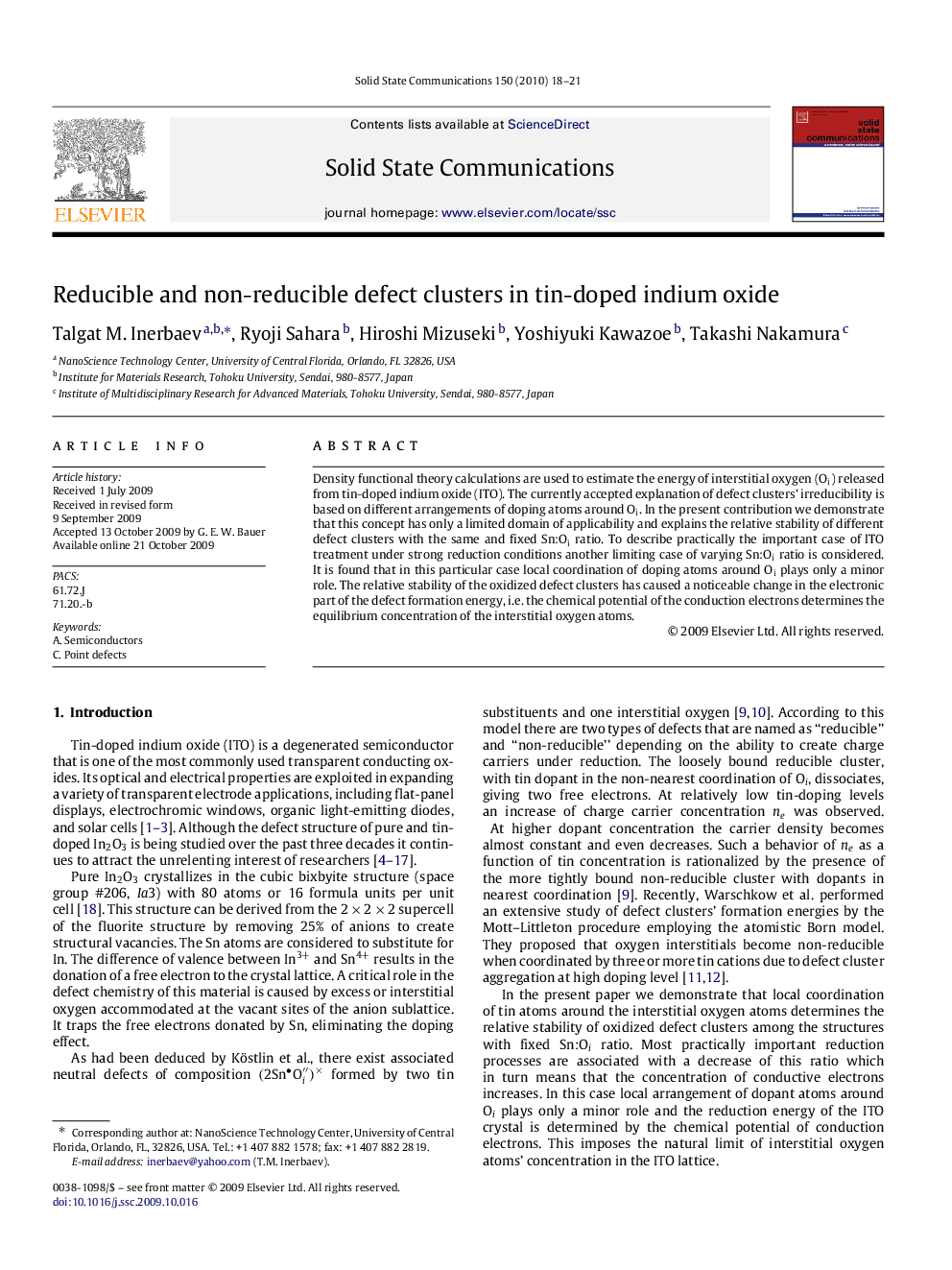| Article ID | Journal | Published Year | Pages | File Type |
|---|---|---|---|---|
| 1594514 | Solid State Communications | 2010 | 4 Pages |
Abstract
Density functional theory calculations are used to estimate the energy of interstitial oxygen (Oi) released from tin-doped indium oxide (ITO). The currently accepted explanation of defect clusters' irreducibility is based on different arrangements of doping atoms around Oi. In the present contribution we demonstrate that this concept has only a limited domain of applicability and explains the relative stability of different defect clusters with the same and fixed Sn:Oi ratio. To describe practically the important case of ITO treatment under strong reduction conditions another limiting case of varying Sn:Oi ratio is considered. It is found that in this particular case local coordination of doping atoms around Oi plays only a minor role. The relative stability of the oxidized defect clusters has caused a noticeable change in the electronic part of the defect formation energy, i.e. the chemical potential of the conduction electrons determines the equilibrium concentration of the interstitial oxygen atoms.
Related Topics
Physical Sciences and Engineering
Materials Science
Materials Science (General)
Authors
Talgat M. Inerbaev, Ryoji Sahara, Hiroshi Mizuseki, Yoshiyuki Kawazoe, Takashi Nakamura,
